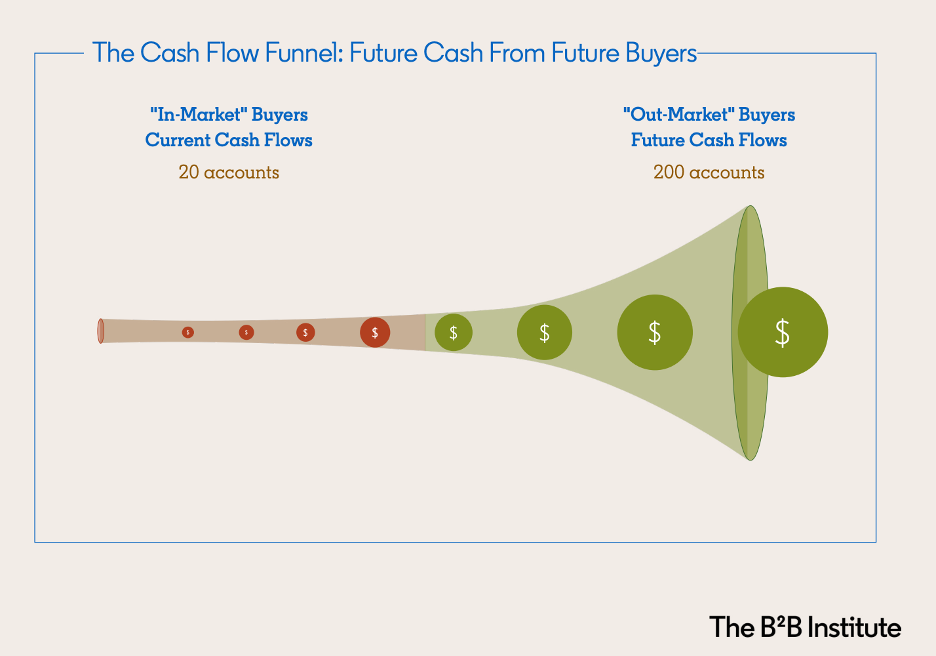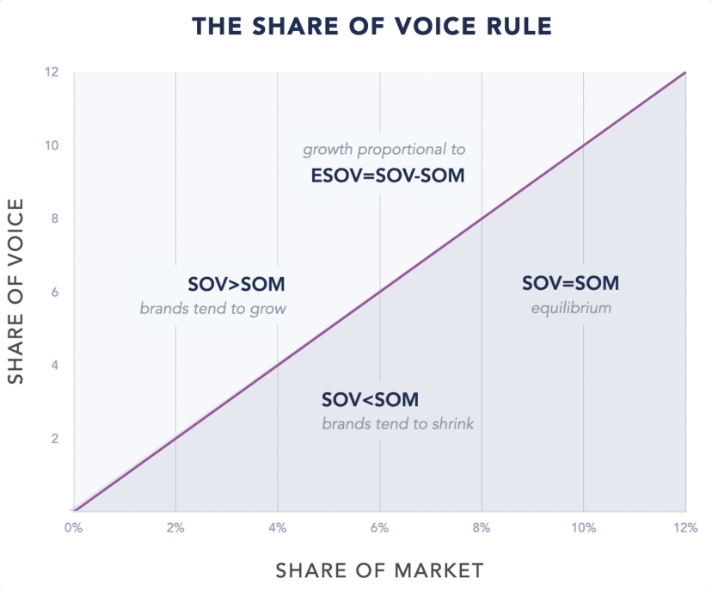Brand marketing can be a different area of marketing. While performance marketing is easily understood and measured, brand marketing lacks tangible value. I believe that looking at the purpose of brand market through the lens of “out of market” demand generation can help it get broader acceptance in the C suite.
If you have had to sign-off on branding you will know what a frustrating subject that it can be. The potential rewards are enormous but is hard to do well and even harder to measure its impact. Often there are many pressures to ensure that short-term sales targets are met and therefore branding seems to be a waste of time and money, without tangible evidence that it provides a benefit to the company.
A typical definition of brand marketing describes “a long-term, strategic plan to continuously boost a brand’s recognition and reputation. “
And if, like me, you have had to justify the costs of a branding exercise to the C suite, it can be a difficult sell. There is a feeling that branding is a good thing, yet it is hard to explain the benefits of branding when there are many competing ways of spending company budgets. Branding can just end up as an exercise in reviewing logos, changing brand colours and a redesigning website. But I that as a starting point, this is a problem because it focuses the business inward, instead of outward to understand customers attitudes and motivation.
I want to argue that that brand marketing is very important to the long-term health of the business, but how does this stack up against spending more money on lead generation activities? As a marketer and believer in the value of brand, I have been looking for ways to be able to explain its importance to business leaders.
Another way of looking at “brand” is to look at how companies generate demand in the short term and long term.
It is natural for businesses focus on those potential customers who are current buyers and “in-market”; their efforts are mainly aimed at lead generation and sales closure activities.
A fact, that most FCOs will be aware of, is that the value of a company is largely determined by its sales up to 10 years in the future and beyond. Sales activation activities do little to impact the long term.
Increasingly, customers have already researched their product needs by the time that they contact your company. In fact, for B2B this is 75% and rising. Most buyers have three or four companies in mind when making a purchase decision and if you are not one of them you are going to find it difficult to be able to make a sale.
So, given that 90-95% of potential customers are out-of- market at any time how do you make sure that your business is one of the company names that are front of mind when they do buy?
You need to be able to communicate with these out-of-market customers (what is traditionally called brand activities). Unlike the in-market customers who are looking for specific features and benefits, the out-of-market customer will engage with you through:
I will look at the anatomy of a good out-of-market demand generation campaign in a future article.
There are always short-term pressures to make their quarterly numbers. Sales teams can often be very dismissive of spending money to reach people who are not yet customers. It can be difficult to justify the cost and, above all, its ability to demonstrate ROI.
In their 2030 trends report Weinberg and Lombardo flip the traditional sales funnel into one that compares the short-term activities focused on in-Market buyers with Out-Market buyers to show that these buyers if properly target to through the right marketing messaging can generate vastly larger future value for the company.
For most businesses, this is achieved by having a sufficiently large share of voice in the market to engage out-market customers.

In most industries, companies are highly focused on their market position, particularly the market share. Your share of voice among in market and out of market customers closely matches the overall market share for your business. So, if you share a voice in the market is 10% then your market is likely to be around 10%.
In fact, there is almost a straight-line correlation between share of voice and market share. Activities are for the long haul; they are not going to be things that will immediately show benefits. Generally, these campaigns take around 6 to 12 months to start to take effect since it takes a while to start to affect customers engagement with your company and its messaging.

As a rough guide, for larger brands, if you want to increase your market share by 0.5% you need to overspend your market share by 10%.
How much should we spend on future custom acquisition versus that required to generate leads and close sales in the present? The B2B Institute suggests that the right figure is 50%. However, for most businesses spend is skewed towards sales activation. It would be a worthwhile exercise for leadership teams to consider carefully where another £1 or $1 of additional sales and marketing spend should be directed.
For new brands, the New Lanchester Strategy (originally based on a military doctrine on how superiority of forces is multiplied on the battlefield) suggests that the challenge is much greater. The New Lanchester Strategy has been successfully applied to markets and suggests that for a new player to get a foothold in that market it will need to spend at least 1.7 times the budget of its weakest competitor. The reason that niche strategies are effective is because they allow the new company to focus its resources on a smaller target.
For new companies, having clarity of their understanding of the high priority needs for customers in their niche is essential, if they are to use their more limited funds productively.
Those companies that consistently engage with customers when they are out of market have a much greater opportunity to become one of the three or four brands that those customers will research when they are in market.
So instead of “branding” which is often a rather nebulous term we should consider how we need to communicate with “out-market” customers. It will help all stakeholders in a business to understand engage with customers who aren’t buying now but will in the future.
Using metrics like “share of voice” are a great way to be able to track your effectiveness with those customers who are out-market and yet are a great predictor of future share of market.